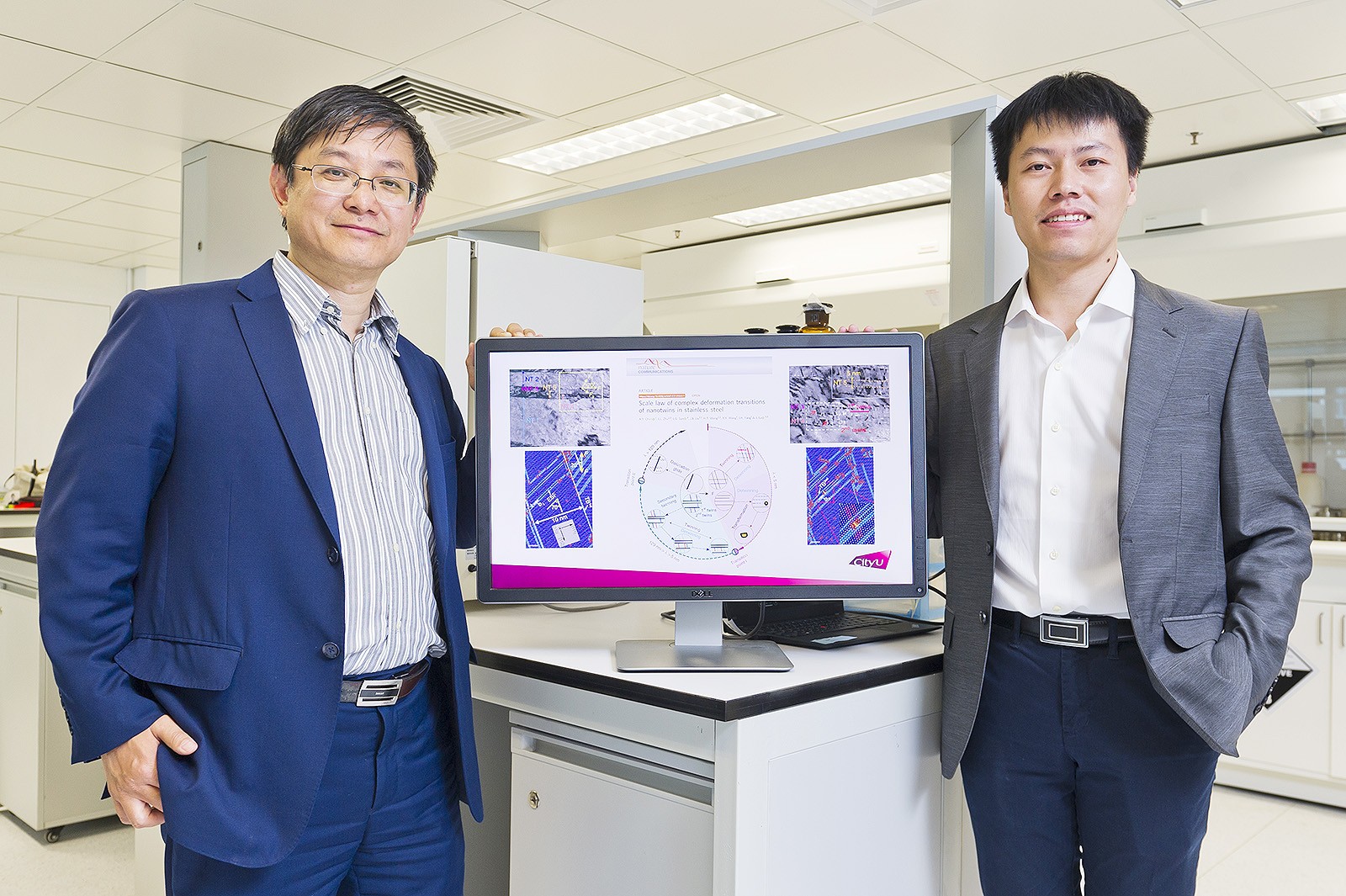New discovery helps develop materials with higher strength and ductility
Mirror Fung
A research team comprising experts from City University of Hong Kong (CityU), University of Shanghai for Science and Technology (USST) and Zhejiang University (ZJU) discovered for the first time the deformation transitions of multiscale nanotwins (NTs) in austenitic stainless steel, which will help develop materials with higher strength and ductility.
Their research results have been published recently by the journal Nature Communications, in a paper titled “Scale law of complex deformation transitions of nanotwins in stainless steel”.
Professor Lu Jian, CityU’s Vice-President (Research and Technology), and his team has discovered the marginal scale of nanotwin deformation transition mechanisms of austenitic stainless steel combining in situ tensile tests with theoretical modeling and atomistic simulations.
Experiments revealed that deformation mechanisms would be completely different when the spacing between NTs is smaller than 5 nm, between 6 and 129 nm, and greater than 129 nm. Furthermore, secondary twinning occurs when NT is between 6 and 129 nm.
Material scientists have been looking for materials with higher level of strength and ductility. In general, the ductility of a metal decreases as its strength increases, and vice versa. However, NT seems to be a desirable structure with great potential for overcoming the dilemma between strength and ductility. Some research results indicated that materials with a higher NT level will have a higher strength and maintain good ductility.
“We studied austenitic stainless steel because it’s a widely used engineering material,” Professor Lu said. “Our research results not only can serve as the basis for exploring a strengthening mechanism for other conventional metallic materials, but also help promoting the design and development of advanced materials with NTs.”
Through strenuous efforts of experiments and theoretical studies over the years, the research team established a deformation map of NTs ranging from several nanometres to hundreds of nanometres in austenitic stainless steel to show the deformation mechanisms of multiscale NTs. They also clearly discussed in their paper the intrinsic mechanisms and transformation processes of NTs with varying scale effects.
The Frontiers of Materials Research: A Decadal Survey (2019), a materials science research report compiled by the US National Academies of Sciences, Engineering and Medicine, indicated that classical metals and alloys, high-entropy alloys and nanostructured metallic alloys would have a bright prospect in the coming 10 years.
“Our research fully aligns with the future direction of development for materials science. Stainless steel with NTs is both a classical alloy and nanostructured alloy, and the latest discovery of our research not only can optimise the performance of classical metals but will also enhance the characteristics of new materials such as high-entropy alloys,” Professor Lu said. “The new alloy developed from high-entropy alloys (Science, November 2018) by Professor Liu Chain-tsuan, University Distinguished Professor in CityU’s College of Engineering, and the super strong magnesium alloy (Nature, May 2017) developed by my research team earlier are both good examples that CityU has often been in the frontier of materials science research in the world.”
The research team will continue to study ways to trigger higher level NTs in stainless steel with the best spacing of NTs. They will also investigate the critical scale of deformation mechanisms for other widely-used engineering materials so as to enhance their characteristics of comprehensive mechanical properties.
Members of the research team included Dr Sun Ligang from CityU, Dr Chen Aiying from USST, and Dr Zhu Linli from ZJU, who are current or previous members of Professor Lu’s research team at CityU. This research project was supported by the National Key Research and Development Programme of China and the General Programme of National Natural Science Foundation of China.
